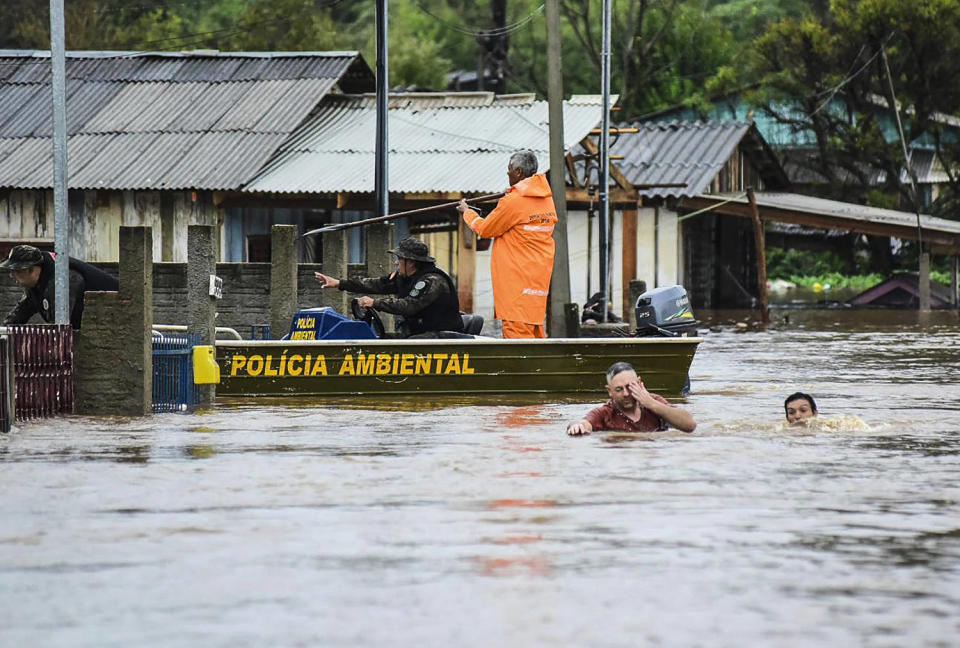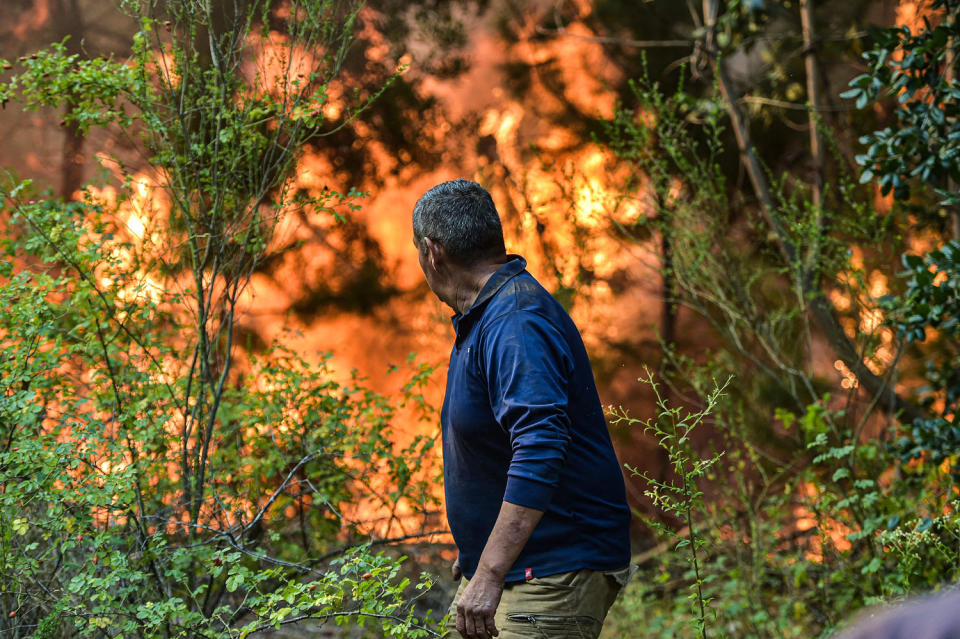The spread of false narratives around three recent extreme weather events in Latin America shows how misinformation about climate change in Spanish and Portuguese can undermine efforts to address and mitigate the effects of global warming in the region, according to a new study published on Wednesday.
The environmental organizations Roots and Friends of the Earth, which are part of the Climate Action Coalition against Disinformation, commissioned the progressive research firm Purpose to analyze how cyclonic flooding in Brazil and Peru, as well as forest fires in Chile, are became fertile ground for online misinformation to flourish.
Online publications in Brazil, Peru and Chile falsely attributed the events to dam breaks, arson and climate research centers that study the atmosphere, sowing confusion, derailing conversations about extreme weather preparedness and politicizing climate action, the study concluded.
The new research points to “a worrying cycle,” Max MacBride, counter-misinformation lead at Roots, said in a statement.
a few cPosts on conspiracy theories and massive online reach
In September, a cyclone hit the state of Rio Grande do Sul in southern Brazil. The storm’s unusually heavy rain and gusty winds caused intense flooding and mudslides that killed more than 30 people and severely damaged countless homes.
While online news sources reported on the floods in the context of a climate catastrophe, disinformation spreaders falsely claimed that the floods were due to the opening of three dam gates.
The false narrative began circulating a couple of days after the storm when local center-right leaders in the region publicly asked the company that operates the dams about “opening the floodgates,” as stated in a press release, according to the study. The company responded by saying there was no evidence to suggest the dams had influenced the flooding.

The Brazilian state environmental department later confirmed that the flooding was caused by the cyclone and had no connection to the dams, but the false narrative continued to spread online.
The study examined 66,800 posts, including posts on social media site X and comments on news portals, about the floods and the cyclone. It was found that a small number of them (1,800 posts) also talked about the dam gates. But this small portion reached a significantly larger audience of more than 5.2 million people, suggesting how social media algorithms can drive misinformation.
“We will not be able to protect people in Latin America from climate change if professional disinformers continue to manipulate climate disasters by playing with social media algorithms,” Michael Khoo, director of Friends of the Earth’s climate disinformation program, said in a statement. .
X did not respond to a request for comment.
In Brazil, videos and discussions posted on TikTok and YouTube spread misinformation and conspiracy theories about open dam gates, rather than the cyclone, causing the flooding. These obtained hundreds of thousands of views and were key to the spread of said misinformation on both platforms.
TikTok said it prohibits misinformation about climate change that undermines well-established scientific consensus. The platform relies on moderators, experts and fact-checkers to monitor content, and users can also use TikTok’s misinformation reporting tool to report false content.
YouTube did not respond to a request for comment, but previously shared with NBC News some of its efforts to combat climate misinformation in languages other than English. A spokesperson said in August that YouTube’s systems generally do not “recommend or prominently display content that includes misinformation about climate change,” but instead feature videos from authoritative sources in search results and recommendations. It also employs “monetization policies that prohibit ads that contradict the authoritative scientific consensus on the existence and causes of climate change.”
The study also cites an investigation by a local Brazilian newspaper that found the spread of misinformation on WhatsApp about the dam that caused the flooding. It appears that hundreds of thousands of people viewed videos shared on the encrypted messaging app that included false claims politicizing the disaster, as the dam at the center of the disinformation was built by the left-wing party currently in power.
Meta, the parent company of Facebook and WhatsApp, did not respond to a request for comment.
Like Brazil, Peru was also hit by a cyclone in March. Cyclone Yaku killed more than 50 people and damaged more than 20,000 homes.
After the storm, posts emerged on social media suggesting that Cyclone Yaku was created by HAARP (a program that studies parts of the atmosphere and has long been the target of conspiracy theories and even flat Earth theories) and by the Jicamarca Observatory in Peru, a radar. Facility also used to study parts of the atmosphere.
Spanish-language weather misinformation related to HAARP is incredibly common globally: The study’s researchers identified 10,655 posts across multiple social media platforms between January 1 and October 5. The posts had a combined reach of more than 32.2 million people, according to the study.
But the presence of the Jicamarca Observatory in Peru served as a link to connect the broader HAARP conspiracy theory to Cyclone Yaku.
Researchers found that these posts garnered hundreds of thousands of views across multiple social media platforms such as X, TikTok, and Facebook.
Make arson the “sole cause” of forest fires
In Chile, when parts of cities in the central and southern regions suffered more than 400 forest fires in February amid extreme heat and drought, a small number of posts on million visits, according to the study. .
The wildfires at the time were primarily caused by a combination of factors: a historic drought, a persistent heat wave, and an increase in the amount of agricultural land that was neglected and vulnerable to wildfires.
However, local authorities in Chile arrested at least 17 people who allegedly started some forest fires intentionally or negligently while carrying out activities such as welding and burning animal wool.
According to the study, these arrests were followed by Chilean political leaders, mainly right-wing and conservative, falsely claiming that arson was “the only cause of the devastating forest fires,” the report states.


When researchers analyzed a random sample of 20,000 X posts and comments from news portals, they found 184 posts that mentioned the words “arsonists” or “terrorists.” According to the study, those posts reached more than 1.5 million people, in part because high-profile people shared them online.
This helped divert online conversation away from the impact of climate change and how it can exacerbate wildfires by suggesting that criminal acts were the cause of the worsening fires, the study found.
According to the report, online misinformation surrounding the three events attributed the destruction to a specific “scapegoat,” which sparked local public anger, and perpetuated existing political divisions or false narratives (such as HAARP changing the climate), and, in turn, diverted the conversation. away from current climate problems and ways to address them.
While some social media companies have implemented content moderation guidelines to curb climate change misinformation on their platforms, members of the Climate Action Coalition Against Misinformation say they need to “take much stronger action to stop the spread.” spread of misinformation online” in all languages, MacBride and Said Khoo.
This article was originally published on NBCNews.com